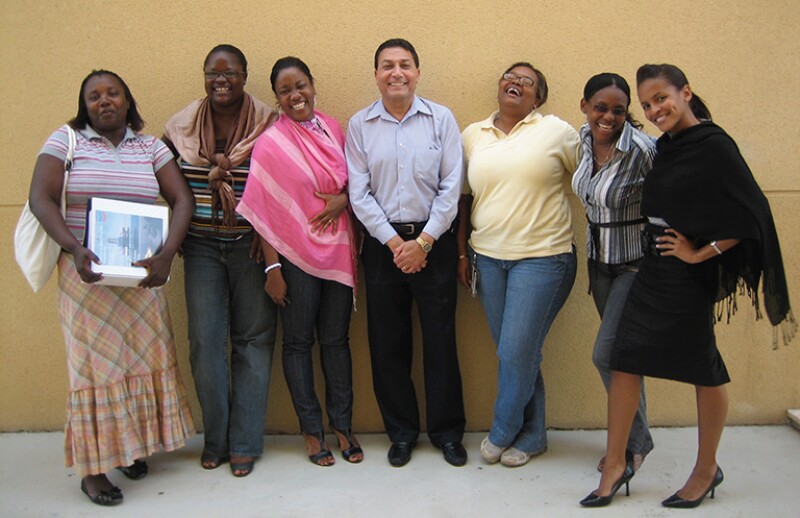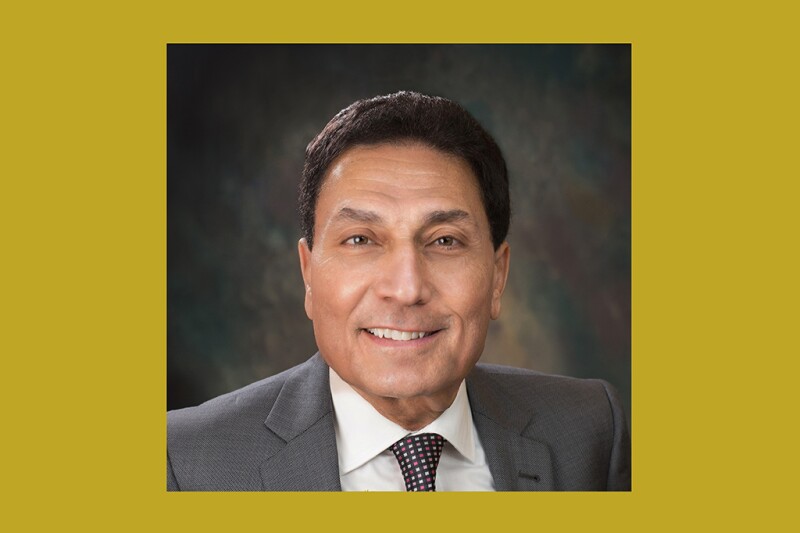Medhat (Med) M. Kamal is a Chevron Fellow Emeritus and an Honorary Member of SPE. He previously worked for Cairo University, Amoco Production Company, Flopetrol Schlumberger, and ARCO Exploration and Production Company.
Kamal has more than 45 years of industry experience in well testing, reservoir description, and production and reservoir engineering.
He was an SPE Distinguished Lecturer in 1997–1998 and 2018–2019 during which he presented his lectures more than 80 times in 35 countries. He served as a member and chairman of SPE Annual Meeting Well Testing subcommittee and textbook and monograph committees, and as executive editor, associate editor, and technical reviewer for SPE Reservoir Evaluation & Engineering and the Journal of Petroleum Technology. He chaired the first SPE conference on research and development in 2007 and the Western Regional Meeting (2019). He served on the boards of directors of Mid-Continent, Gulf Coast, Dallas, and Golden Gate sections of SPE and chaired the Dallas and Golden Gate sections. He also served on the SPE International Board of Directors (2007–2009) as the Regional Director of Western North America.
Kamal has been recognized with several regional and international awards including the SPE Cedric K. Ferguson Medal, SPE Formation Evaluation Award, SPE Distinguished Service Award, SPE North and East Texas Regional Service Award, and the Texas Petroleum Engineer of the Year Award.
He holds a BSc in petroleum engineering and an MSc in engineering from Cairo University and an MS and PhD in petroleum engineering with a minor in computer science from Stanford University.
Let’s begin with a brief introduction of the theme you’ve selected for your presidency, Petroleum++. What will you be emphasizing?
There are three elements to this theme: petroleum, the first plus, and the second plus. Let me explain them one at a time.
“Petroleum” refers to the challenges petroleum engineers face now and for the foreseeable future to provide the world with the hydrocarbon energy it needs. By hydrocarbons, I mean oil and natural gas, not coal.
We can think of the entities that study and predict the world’s future need for energy as three groups: the government entities like the US Energy Information Administration (EIA) and the European Union International Energy Agency (IEA); the major international operators like ExxonMobil, Shell, etc.; and the national oil companies. The predictions provided by all three groups indicate the oil and natural gas share in the energy mix may decline slightly from a little over 50% currently to a little below 50% by 2050. However, the needed volume of hydrocarbons will increase as the world population moves from around 8 billion now to about 9.8 billion in 30 years and as the standard of living continues to improve in the developing regions such as Africa and Asia.
When we look at the world’s current reserves and the current technology to produce these, you can add things up and see that we must continue our technical advancements to meet the growing demand for energy.
To achieve this, we must continue the traditional petroleum engineering activities that we have been doing for more than 100 years, which have continually evolved over time to achieve results not previously imagined. For example, if you told people 20 years ago that we were going to be producing oil and gas from shale formations, their response would have been “we don’t do that.” Yet today, it is a significant part of our production. We developed the technology, we advanced the technology, and we must continue the additional work to advance it further.
Another important challenge is climate change and that is referred to by the first plus sign. We do not live in a vacuum. We are part of the world community which is concerned about its effects. There is a lot of work that petroleum engineers are already doing and will continue to do to mitigate the contributing factors.
For example, the mitigation of carbon dioxide (CO2) emissions. The current consensus is that the most viable way is to capture and sequester it in underground formations. We know how to inject CO2 under the ground and then use it to extract oil. For carbon capture and underground storage (CCS), the CO2 must stay underground for a long time. Petroleum engineering is critical for determining the reservoirs suitable for CCS, the removal of fluids from pore volumes to make room for CO2, and ensuring permanent storage of the CO2 injected underground.

The mitigation of greenhouse-gas (GHG) emissions such as methane also draws upon our work in developing the technology to monitor emissions and continuing to have our facilities updated and operated in a way to capture or prevent GHG releases.
Our role in advancing additional energy sources, represented by the second plus sign in Petroleum++, also depends on petroleum engineering. Examples are efforts in the areas of geothermal and hydrogen. Geothermal energy involves the drilling of wells and creation of subsurface networks to access water at very high temperatures to produce steam or hot water to be used to generate energy. The same technologies are used to produce oil and gas from shale formations: drilling horizontal wells and using hydraulic fracturing to increase the surface area that allows the fluid (or heat) to flow. Generating blue hydrogen is another example where natural gas is converted to clean‑burning hydrogen and CO2, which would be injected underground
We are not abandoning or reducing the role of traditional petroleum engineering. Instead, we are adding capabilities to it as we advance our technologies and use them to develop the evolving energy mix. Energy transitioning has been occurring over our long history, from when people were using wood to coal to oil and gas, and so on. We will continue to be a major part of this process to provide the world with the energy it needs for a better life.

The Russia-Ukraine war has disrupted the regional supply of oil and gas and resulted in wider supply imbalances as sanctions have been imposed and by actions taken by both countries. What effect will this have on the energy transition?
The war is emphasizing that the world needs flexibility in its sources and uses of energy. Europe’s dependence on Russian gas and its inability to get the supply it needs demonstrates that although it has more renewable energy than other parts of the world, it is not yet sufficient for their demand. In the absence of hydrocarbons, economies and energy security are at risk. The world needs energy that is safe, reliable, affordable, and secure. So, the disruption has resulted in an increased focus on diversifying the supply of and forms of energy. Right now, hydrocarbons are the most affordable.
The SPE Board of Directors and leadership are undertaking the reviewing and updating of the SPE Strategic Plan that was developed in 2017/2018. This is a periodical exercise to define goals to better meet member expectations and industry needs over the next 3 to 5 years. Please describe the process and where it stands today.
There are four stages: data collection and research, strategic visioning, strategy development, and implementation and action planning. We are currently in the data collection and research stage, including one-on-one virtual interviews and focus groups with members, past presidents, advisory councils, young professionals (YPs), academicians, and industry leaders. An SPE Connect General Discussion community provides another means for members to contribute to the development of the strategic plan. And an online survey with mostly open-ended questions has been launched to gain more insights directly from our members. We want your input. We also will have a panel discussion during the 2022 Annual Technical Conference and Exhibition in Houston where SPE 2021, 2022, 2023, and 2024 presidents will be listening to input from our members who would like to contribute their ideas. This session will be on Tuesday, 4 October, 8:30 to 10:10 a.m., in Room 372 C/F at the George R. Brown Convention Center.
The strategic visioning builds on the data obtained from members and includes virtual and in-person sessions with the SPE Board and staff. This is to define the current conditions in the energy space and trends. What are the key drivers for change for both hydrocarbons and other energy sources, and how will those potentially affect SPE and its mission to help our members continue to do their work and continue to advance in their careers?
After all stages of the process are completed, a report of action plans and metrics, including performance measurements, will be written (late October/early November).

As the global energy mix and the industry continue to evolve, what do you see as the most important issues for our students and YPs?
Our strategy plan is also focusing on our student members and early-career professionals. I am extremely impressed with our student members. Since I was nominated and elected to be the 2023 President, I have had the opportunity to visit many student chapters. As potential engineers, the student chapters are doing things to learn about areas of petroleum engineering and technology that they may not have access to or not have enough courses in their universities. They are holding seminars and inviting people from other places to come and talk with them. Many are also doing valuable community service work.
There is also a lot of energy among our YPs and their SPE activities. We need to continue to make sure that we have the programs for them that will allow them to continue to advance in their careers because they still have a long career in front of them. Many of them are applying petroleum engineering in the area of CO2 sequestration and energy transition.

What other thoughts would you like to share?
SPE members are from around the world, which is a tremendous strength for our organization. SPE’s history began with the American Institute of Mining Engineers (AIME). In 1913, a standing committee on oil and gas was created within AIME, which evolved into its Petroleum Division. In 1957, the division became the Society of Petroleum Engineers of AIME. In 1985, SPE was incorporated separately from AIME.
In its early years, SPE was mostly people from the US. Today, about 37% of our members are from the US, 63% from the rest of the world. That is one of our strengths because as energy is transitioning, so too is SPE. From its early beginnings, SPE recognized that petroleum engineering is not only a US domain and expanded its mission to become the world organization it is today. The diversity of our membership and its varied experiences provides a unique range of technical expertise to our programs. We need to build on this legacy as we add competencies and expand the domain of petroleum engineering to address the challenges of climate change and new energy forms.


